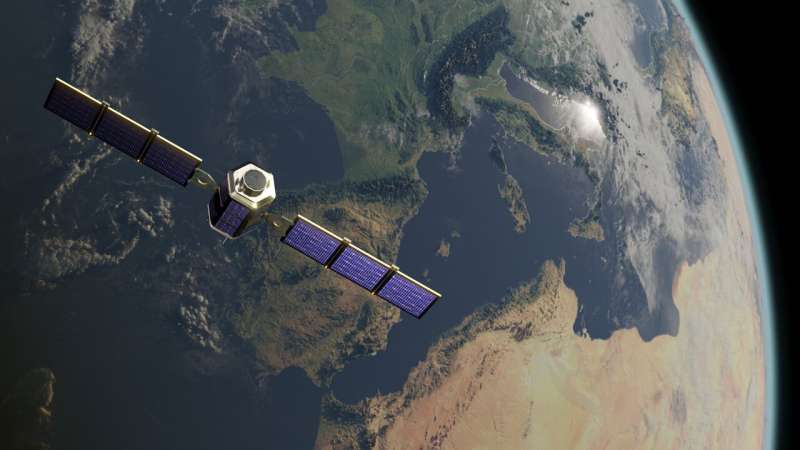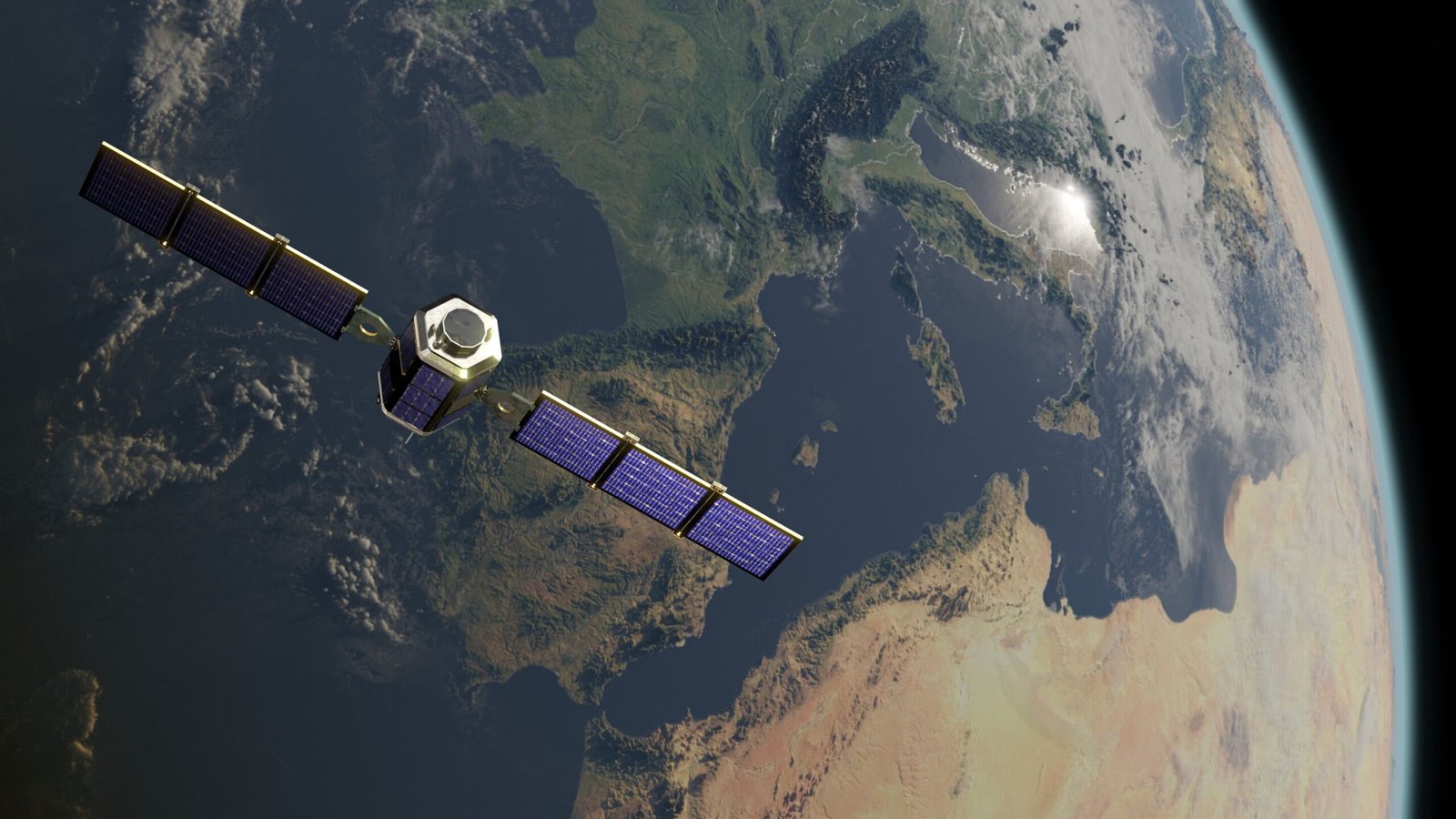
Three studies conducted with the collaboration of the Helmholtz Institute Freiberg for Resource Technology, an institute of the Helmholtz-Zentrum Dresden-Rossendorf (HZDR), show significant progress in monitoring mining areas.
The researchers advocate the ethically guided use of artificial intelligence (AI) for Earth observation in terms of environmental protection and disaster prevention. Furthermore, they also have developed an AI-supported model that incorporates data obtained through remote sensing. That might represent a major step for the Earth observation community.
The studies have been published on the arXiv preprint server and in IEEE Transactions on Pattern Analysis and Machine Intelligence.
“MineNetCD—A Benchmark for Global Mining Change Detection on Remote Sensing Imagery” is the title of a comprehensive study led by an international research group with the participation of the Helmholtz Institute Freiberg for Resource Technology (HIF). The study focuses on the exploration and monitoring of mining areas using remote sensing images.
The newly developed dataset, “MineNetCD,” is based on over 70,000 bitemporal high-resolution remote sensing image pairs from 100 mining sites worldwide.
These images, together with the proposed unified change detection framework that integrates over 13 advanced change detection models, enable a detailed inventory and analysis of mining-induced changes.
“For the first time, we have a global benchmark for monitoring mining activities at our disposal. The algorithms developed prove to be powerful tools for researchers and developers in monitoring global mining activities,” explains Professor Pedram Ghamisi, Head of the Machine Learning group in the Exploration Department at HIF.
A key component of the study is the ChangeFFT model, which provides mining planners with a specific measurement method—the so-called Fast Fourier Transformation—for utilizing remote sensing images. This allows for a detailed analysis of critical spectral components and the detection of changes down to the pixel level. At the same time, it achieves higher accuracy and efficiency in processing large datasets.
“The open access to MineNetCD and the ChangeFFT model is intended to support the global research community and will contribute to the development of sustainable mining practices,” Professor Ghamisi explains the advantage of the innovative dataset.
The study has demonstrated an outstanding ability to distinguish changes using bi-temporal remote sensing images using the MineNetCD method. This makes it possible to consistently create more accurate change detection maps.
“MineNetCD is a robust solution for detecting mining-related changes, which is crucial for environmental impact assessments in the mining industry using geodata,” emphasizes Professor Ghamisi. “We believe this sets a benchmark for advancements in sustainable mining.”
Responsible AI for Earth observation
Among the new possibilities for using remote sensing images in mining is the increasing application of Artificial Intelligence (AI). In the recent study “Responsible AI for Earth Observation,” an international research team emphasizes the need to incorporate related ethical and responsible practices.
“AI has the potential to achieve significant advances in the analysis of Earth observation data, particularly in areas such as climate change, deforestation, and natural disasters. However, the use of these technologies also carries risks, such as algorithmic biases, lack of transparency, and the potential to exacerbate social inequalities,” explains Professor Pedram Ghamisi, who played a leading role in the international study.
The researchers highlight the importance of techniques to mitigate such biases and argue that the AI models used must not only be powerful but also socially and ethically interpretable and accountable.
Professor Ghamisi states, “This includes careful data collection and preparation, the development of models that minimize the impact of biases, as well as close collaboration with stakeholders to incorporate their needs and concerns into the development process.”
The study therefore advocates for the prioritized use of transparent and understandable AI systems.
“The use of interpretable machine learning models and explainable AI techniques is intended to ensure that users can understand an AI-based decision-making process. This is a prerequisite for building trust in the results,” the authors note.
They also call for an interdisciplinary approach that strengthens collaboration between professionals, AI researchers, and relevant stakeholders: “The goal is to ensure that innovative remote sensing technologies are always developed and deployed in line with fundamental social and environmental priorities.”
SpectralGPT: An AI-based model for remote sensing images
ChatGPT is known by many as an AI-supported communication platform. Such a trained platform now also exists for remote sensing images, called SpectralGPT. This was presented in a study titled “SpectralGPT: Spectral Remote Sensing Foundation Model,” which was carried out by an international research group in collaboration with the HIF.
SpectralGPT is the first universal remote-sensing foundation model, which is trained using over a million images of varying sizes, resolutions, time series, and regions in a progressive training fashion. This approach enables the full utilization of extensive remote sensing big data and is tested across a variety of vision-related tasks.
Professor Ghamisi says, “The focus of AI algorithms has shifted between being model-centric and data-centric over time. However, focusing on only one aspect is insufficient. Instead, there must be a balanced emphasis on both data quality and model innovation, which would bring AI experts and domain experts together.
“Perhaps we are entering the era of data-model-centric approaches. The rise of foundation models, such as our pioneering SpectralGPT and other models from Microsoft, IBM, NASA, ESA, and others in the field of Earth observation, might be evidence of this trend.”
He adds, “These models are a step toward the long-standing dream in the Earth observation community of addressing a variety of applications using a single model.”
More information:
Danfeng Hong et al, SpectralGPT: Spectral Remote Sensing Foundation Model, IEEE Transactions on Pattern Analysis and Machine Intelligence (2024). DOI: 10.1109/TPAMI.2024.3362475
Pedram Ghamisi et al, Responsible AI for Earth Observation, arXiv (2024). DOI: 10.48550/arxiv.2405.20868
Weikang Yu et al, MineNetCD: A Benchmark for Global Mining Change Detection on Remote Sensing Imagery, arXiv (2024). DOI: 10.48550/arxiv.2407.03971
Provided by
Helmholtz Association of German Research Centres
Citation:
AI and remote sensing data sets advance sustainable mining and Earth observation (2024, August 29)
retrieved 29 August 2024
from https://phys.org/news/2024-08-ai-remote-advance-sustainable-earth.html
This document is subject to copyright. Apart from any fair dealing for the purpose of private study or research, no
part may be reproduced without the written permission. The content is provided for information purposes only.
